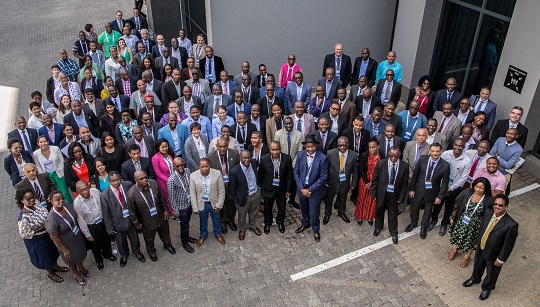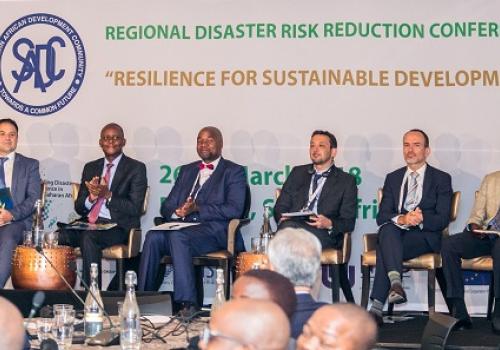The three-day Southern African Development Community (SADC) Regional Disaster Risk Reduction (DRR) Conference started on 26th March, 2018 in Pretoria, South Africa under the theme; Resilience for Sustainable Development with a call for renewed commitment to accelerate the implementation of the DRR frameworks such as the Sendai Framework for DRR (SFDRR) (2015 – 2030) and the African Union Programme of Action for DRR.
Speaking on behalf of the SADC Executive Secretary, Her Excellency Dr Stergomena Lawrence Tax at the opening of the conference, the Director of Food Agriculture and Natural Resources (FANR) at the SADC Secretariat, Mr Domingos Gove said the SADC Region faces an increasing trend in disaster occurrences, citing as examples, the El Niño induced drought of 2015 and 2016 and acute water shortages attributed to prolonged drought conditions.
Mr. Gove said there is a greater need for strengthening collaborative efforts to build resilience at all levels in order to secure sustainable development gains for the SADC Region now and for the future. He commended the SADC Member States for their efforts in strengthening DRR and resilience policy and institutional mechanisms at various levels.
The Director added that the approval of the Regional Disaster Preparedness and Response Strategy and Fund by SADC Council of Minister in August 2017 is an important milestone in the management of disasters in the SADC Member States.
On his part, the Deputy Director-General and Head of the National Disaster Management Centre in the Department of Cooperative Governance (DCOG) for the Republic of South Africa, Dr. Mmaphaka Tau said the Regional DRR Conference provides an excellent opportunity to forge closer collaboration with different players such as government agencies, private sector, academic and research institutions, civil society organisations and international cooperating partners to reduce disaster risks in the Region.
The Technical Coordinator for Disaster Risk Reduction at the African Union Commission, Mr Gatkuoth Kai told delegates to the conference that time has come for the SADC Region to domesticate and implement DRR frameworks, mechanisms and strategies that have been put in place at continental and regional levels to reduce Africa’s vulnerabilities to multi-hazards.
Speaking on behalf of the World Bank, the Bank’s Global Technical Lead for Resilience and Disaster Risk Management (DRM), Mr. Niels Holm Nielsen underscored the importance of implementing disaster risk reduction strategies and frameworks towards eradication of extreme poverty. He said disaster occurrences are negatively affecting development and that poor communities are the worst affected when disasters occur because of their lack of capacity to cope with the impact.
The Deputy Chief of the United Nations Office for Disaster Risk Reduction (UNISDR) Regional Office for Africa Mr. Luca Rossi, said the Sendai Framework for Disaster Risk Reduction 2015-2030, the Paris Agreement on Climate Change and the 2030 Agenda for Sustainable Development, have all recognised the relevance of a holistic approach to sustainable development, which grounds its bases on DRR, Climate Change Adaptation and resilient urban development.
Supported by the European Union, the World Bank and the Republic of South Africa in partnership with UNISDR, and African Union Commission, with technical support provided by North West University the three- day Regional DRR Conference is aimed at reviewing progress made by the SADC Regional DRR Programme towards the management of uncertainty, reducing vulnerability and building resilience for SADC Member States and communities in view of the global and regional frameworks that guide DRR, resilience and sustainable development.


